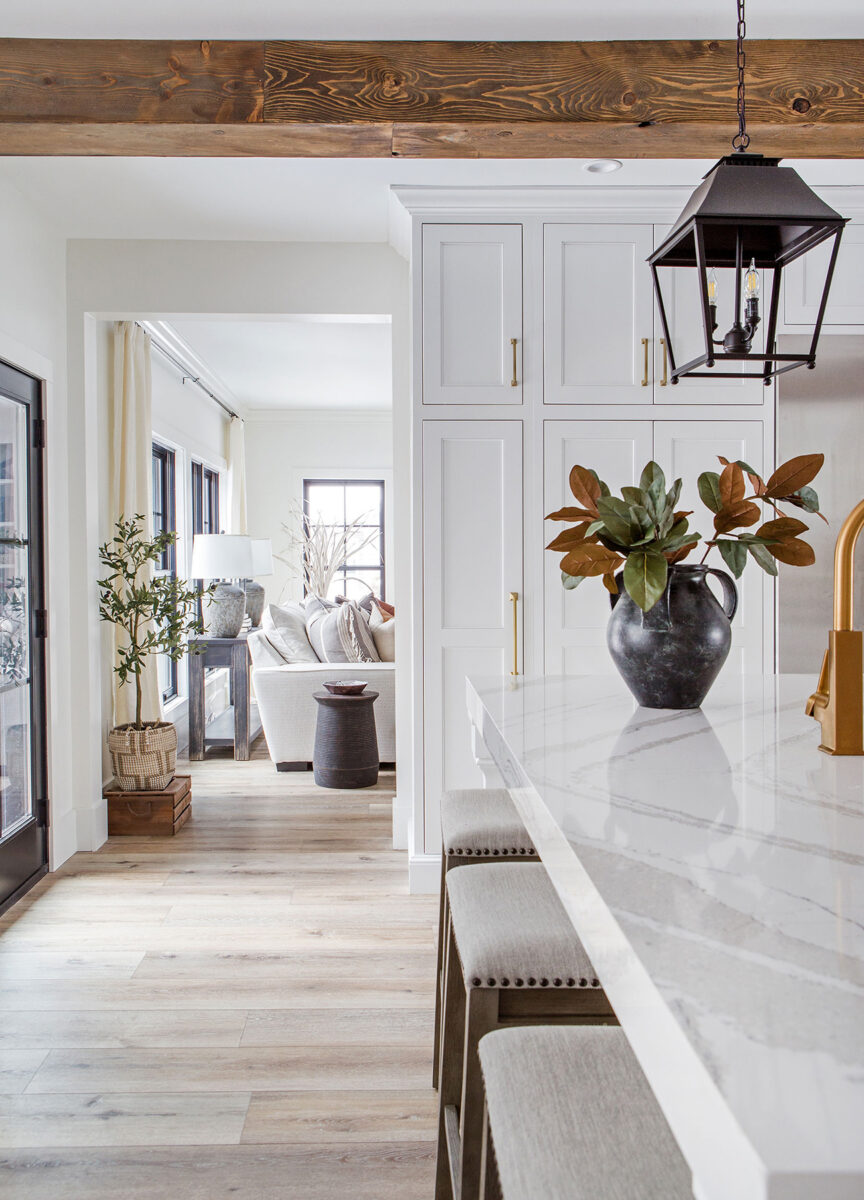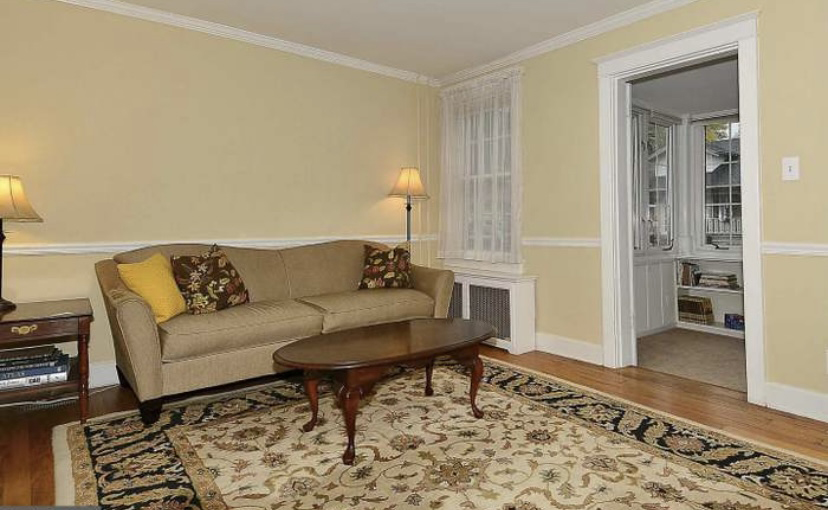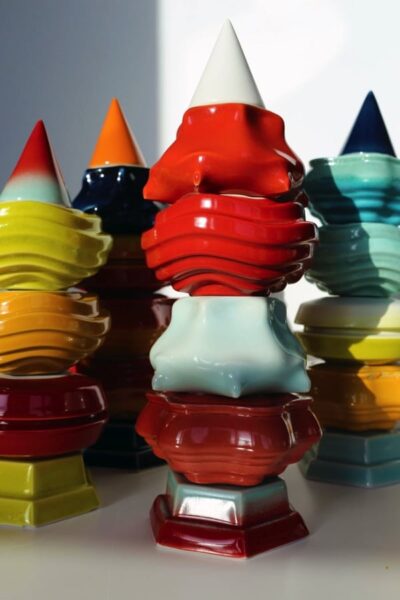Fix your home’s funky energy with these 3 tips

If you are looking to make a change in your home, sign-ups just opened for my free live workshop! We only host this popular offering once a year, so make sure you check our session schedule and save your seat ASAP.
“The vibe is off.”
I saw this phrase floating around on Twitter last summer. I think the writer was talking about New York City, and how in the wake of the Delta variant, things just didn’t feel like the “hot vax summer” that had been hyped all spring.
The summer passed, but the phrase has stayed with me, and I find myself thinking about it a lot. There are times when you walk into a room and the vibe is off. Something just doesn’t feel right. Could be the people. Maybe they were having a personal conversation (hopefully not about you) right before you walked in, and there’s an odd hush in the air. Or maybe they’re having a bad day, and it’s soaking into the atmosphere, giving it an acid tang.
Often, though, you can walk into a room and the vibe is off even if there’s no one in it. Something about the design of the space itself is funky, unsettling — and you don’t know what it is.
It’s important to note that I’m not talking here about obvious sources of funk: clutter, weird smells, broken stuff that you’ve been ignoring for months. Yes, these things do funk up your home, but they’re probably things you can identify and figure out how to address with a modicum of googling.
No, what I’m talking about are the hidden gremlins of a home, the ones that escape the naked eye. Like when you walk into a home that’s perfectly decorated but oddly uncomfortable. A home that’s spotlessly clean and beautiful but you can’t wait to leave. Or maybe you’ve recently moved to what seemed like a bigger, better house, and you look around and think, this is all the same stuff from our old home, so why does everything feel so off here?
It’s tempting to brush this feeling off, especially if there’s no apparent cause. We distrust what we can’t see, and gut feelings in particular have long been considered an untrustworthy source of information. Since the hyper-rationalist Enlightenment, Western culture has viewed emotion and intuition as not just inferior sources of knowledge, but a threat to a well-reasoned, intelligent understanding of the world. “Vibes” are woowoo, hysterical, or simply imagined. So when something feels off in our homes, we’re much more likely to try to convince ourselves that everything’s fine than look for ways to fix it.
Yet the reality is that the physical objects in a space influence our state of mind, often without our realizing it. Our unconscious brains are constantly scanning our surroundings in an attempt to ensure our safety, and their subtle findings can influence our emotions and even our behavior. For example, research has shown that sharp angles in a space stimulate activity in the amygdala, also known as the brain’s alarm system, creating a low-level anxiety. Round shapes don’t have this effect. Or consider a study done at the University of Chicago that found that people who looked at pictures of asymmetrical buildings and rooms cheated more often on a math test than those who looked at symmetrical ones. Perhaps my favorite example of this is a study done in Vancouver which showed that when people stood near a rainbow crosswalk, they were more trusting of people around them than people in a regular black-and-white one.
In other words, when the vibe is off in our homes, it can aggravate anxiety, mess with family dynamics, and just generally make daily life unpleasant. Vibes may be hard to pin down, but they do matter.
How to tell if the vibe is off
If you’re not used to paying attention to vibes, now is a good chance to take a look at your space through a fresh lens: your gut. Notice how you feel in your space. Are you energized or drained? Do you feel calm or agitated? Is it easy to be with others in your space, or do people not know where to put themselves? Does conversation flow, or is it slightly awkward?
If something feels off, but you don’t know what it is, read on for three common causes of weird energy in a home, and how to fix them.
Find your home’s heart
Do you know where the heart of your home is?
The heart of a home is its center of gravity — a space people are naturally drawn to. In some homes this is the literal center of the home, but not always. Sometimes it’s the kitchen. It could also be the living room, dining table, or den. It’s a public part of the home that feels buzzy yet grounded, magnetic and alive.
But sometimes the heart of a home isn’t clear. This can happen when the place people are drawn to isn’t comfortable or accessible. So, for example, let’s say you have a sunny room that’s directly off the entryway, but it’s set up as a formal living room. It’s the place people want to be, but there’s nowhere comfortable to sit, so your family ends up retreating to their own rooms to relax. The house ends up feeling dead even when everyone is home.
The same thing can happen if the heart of the home is bland and nondescript. My student Jennifer faced this problem in her home. She dreamed of having her family spend time together in the evenings reading and playing, but instead “our living room was a place we used solely to transit from the front door,” she says. When the heart of a home becomes a way station, you know that something is off.


To fix it, Jennifer didn’t have to paint the walls or rip up floors. She added a colorful rug, art, and plants. But even with these small changes, the effect was dramatic. “We joyfully spend hours a day in this room and it now truly (and finally) feels like home.”
If your home’s heart is unclear, start to notice where people want to be when they’re in your space. Where do you want to be? Where do you want to sit and have a conversation with a friend? Where do you want to play a game? Often this is going to be a place where there’s good natural light and a sense of visibility to what else is going on in the home.
Now, what’s preventing you from really using this space? Do you need more comfortable seating or better lighting? A soft rug to improve the acoustics? A piece of art on that blank wall? Clarify your home’s heart, and you’ll find that the whole house feels a bit more settled, a bit more secure.
Adjust the scale
A few years ago, I had to go get some pre-operative tests at the outpatient wing of a hospital in New York City. It was a new hospital building, and everything was clean and modern, almost more like a fancy office building than a hospital. I was shown into a room and then left to wait. And wait. And wait.
Later I would learn that they forgot about me, but for half an hour I sat in a large, steel-grey box of a room feeling deeply anxious. I knew I was nervous about the surgery, but it wasn’t just that. The grey walls seemed to soak up all the light, making me feel almost cold. The fluorescent lighting was flat and grim. But when I really thought about it, it wasn’t just that the room was unwelcoming. It made me feel small and powerless. The ceilings were 10 feet at least, and the furniture felt tiny in that cavernous box. Small pieces of generic art made the walls seem even more vast. The scale of the place was off.
Scale is something we don’t think much about in our environments, but it has a powerful impact on the way we feel in a space. When the furnishings in a room feel proportionate to the space and our bodies, it sets us at ease. When they’re too big or too small, they make us feel awkward, like our bodies are too clunky for our space, or vulnerable — exposed and unprotected.
Moving can be a big trigger for this mismatch. I confess I’m wrestling with this as we adapt to a bigger home after spending the last few years in a 1-bedroom apartment and a cottage. It took me awhile to realize that the ungrounded feeling I had wasn’t just the disruption of moving, but the sense that some of our furniture was a little too dainty for our new home. This doesn’t mean getting rid of everything, though. Rather, I’m moving pieces around and looking for a few more solid, substantial pieces to ground the rest.
Things can also be repurposed to add scale. For example, my original plan was to do a gallery wall in the living room, but we don’t have enough framed art right now to make that work well. So instead, I’m working on hanging a quilt on that wall. The scale will provide a focal point that grounds the other pieces. Similarly, a large rug can make smaller pieces of furniture feel grouped together, and therefore bigger.
Similarly, downsizing from a bigger place to a smaller one can mean having bulky furniture that feels overwhelming in a petite space. Hand-me-downs from older relatives can also create this issue. Addressing it may mean swapping out some oversized pieces, or recovering them or painting them in lighter colors that makes them feel less massive.
Fix your lighting
If your home has a beating heart and everything feels in proportion, but still feels funky, then it’s time to look at your lighting.
Light is a bit of a paradox. It illuminates everything we see, yet is itself invisible. Because of this, we often fixate on elements like color, material, and fixtures, when in fact the source of the problem is the light falling on those things.
When the light in a home is flat, even the most beautiful decor feels lackluster and dull. It can also be hard to know where to gather. Pools of light and shadow delineate space, creating a sense of intimacy. A pendant light over a dining table, for example, creates a contrast with the surrounding areas that draws people in. Put the same dining table in a room lit with overhead fixtures and the even light makes it feel like you’re in a cafeteria.
If your home is filled with things you love, yet you just don’t feel cozy or warm, experiment with decreasing your reliance on overhead fixtures and adding smaller points of light closer to eye level. Add a lamp on a side table or in a bookcase, or try lighting a favorite piece of art with a gallery light. You can even try candles as a way to bring dynamic light into your space.
I was reminded of the power of this fix recently when, on a whim, I brought an extra lamp into my office. My workspace happens to be in a room that overlooks a covered porch, which means little natural light gets in. I had two relatively bright lamps in the space, but had basically resigned myself to my office feeling a little gloomy. But when I brought that spare lamp up from the basement, the whole room changed. I realized I’d been too quick to give up on my space. A little light made all the difference.
Reminder: My free live home workshop is coming soon! Learn how to create a home you love without moving, renovating, or spending money you don’t have. Save your seat right here.





Discussion (7 Comments)
Thank you for this article! I’ve been feeling like something has been off in our house, but couldn’t put my finger on. After reading this article, I realized I need to flip our family room and living room furniture due to the size differences between the rooms. I’ve also been wanting to add color to the living room, but the family room couch is a beautiful blue-green, instead of the grey couches we are currently using.
Wow, what a wonderful example, Nancy! Thanks for sharing. And how great that swapping furniture will be a way add color without buying something new!
Where is the multi colored rug from? Love it!
I’m sorry, I don’t know. Glad you love it though!
This was such a good read! Your points remind me of some of the things I’ve read in A Pattern Language (and a follow up book, Patterns of Home). A recent post of yours about favorite design books sent me down that rabbit trail and I’m making home and yard choices with the concepts in those books. So thank you for this great article and for the great book recommendations.
I manage a women’s clothing boutique and I am wondering what color I should paint the walls is the dressing rooms to help women feel good about themselves.
Thanks.
Brenda! What a thoughtful question. The truth is that everyone’s skin looks a bit different with different light and different colored backgrounds. The only guidance I can give is to lean toward warmer tones, which will make the reflected light look warmer. And then I would get some different paint samples and test them!